OnePlus Buds vs Apple AirPods: Which wireless earbuds are best?
The OnePlus Buds are half the price of Apple's AirPods. We find out if they're only half as good.
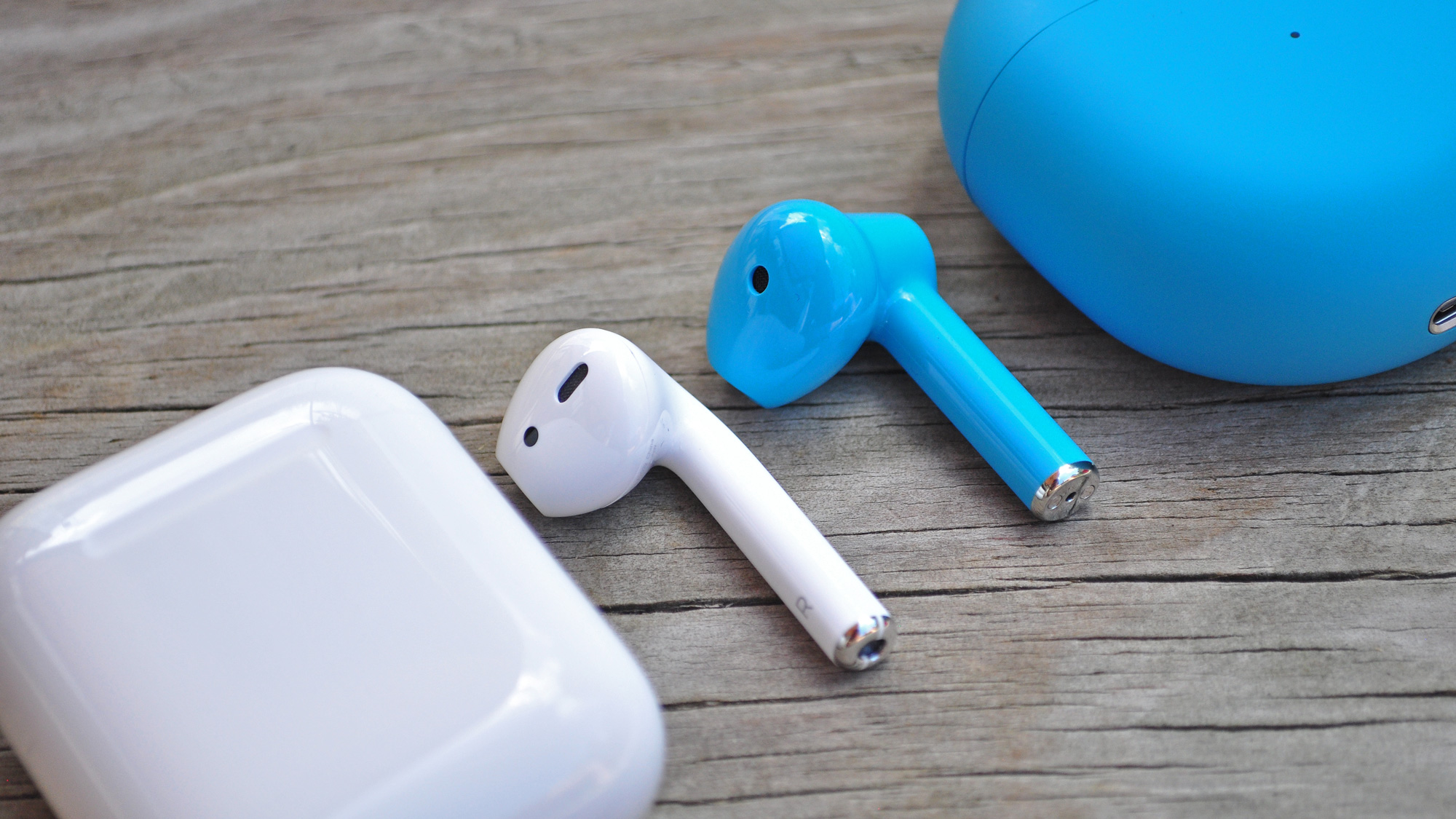
OnePlus knows it's taken a long time to introduce its own pair of truly wireless earbuds; one of the company's founders admitted as much during its OnePlus Nord launch event. Nevertheless, the OnePlus Buds are here and, at least on paper, they make you wonder why anyone would care to spend money on anything more expensive. Like, perhaps, a set of Apple's AirPods.
Obviously, if you're already in Apple's ecosystem, it makes sense to just pick up a pair of the company's own truly-wireless buds. But if you're not, the OnePlus Buds make a compelling argument. They're only $79 to the AirPods $159, tout better battery life and are unsurprisingly a better accessory if you own a OnePlus phone, as they're made to pair seamlessly with the firm's handsets, and have several exclusive customization perks if you do so.
- OnePlus Nord review (hands on)
- The best cheap wireless earbuds you can buy today
So how do these competing headphones compare? This OnePlus Buds vs Apple AirPods faceoff sets out to determine exactly that, taking account of everything from the devices' design, to their sound quality, to their battery life. Read on to find out which ends up on top.
OnePlus Buds vs Apple AirPods: Price
The OnePlus Buds begin shipping July 27 and cost $79 ($109 CAD). In the U.S., only white and gray will be on offer in terms of colors, though gray will arrive some time after the Buds launch. Nord Blue will be sold in Europe and India exclusively.
AirPods start at $159 and of course, only come in white. That's twice as much as OnePlus' buds, though it must be said that AirPods are usually offered below cost from a number of retailers; in fact, some have them for as low as $129. Nevertheless, a price difference of double is hard to overlook, especially considering OnePlus' contender offers many of the same features as Apple's.
Winner: OnePlus Buds
OnePlus Buds vs Apple AirPods: Specs
| Header Cell - Column 0 | OnePlus Buds | Apple AirPods |
|---|---|---|
| Price | $79 | $159, $199 with wireless charging case |
| Colors | White, gray, Nord Blue (Europe/India only) | White |
| What's in the box | Charging case, short USB-C cable | Charging case, Lightning cable |
| Battery life | 7 hours (earbuds); 30 hours (case) | 5 hours (earbuds); 24 hours (case) |
| Water resistance | IPX4 | None |
| Size | 1.49 x 0.74 x 0.63 inches | 1.59 x 0.71 x 0.65 inches |
| Weight | 0.16 ounces (earbud); 1.3 ounces (case) | 0.14 ounces (earbud); 1.4 ounces (case) |
OnePlus Buds vs Apple AirPods: Design
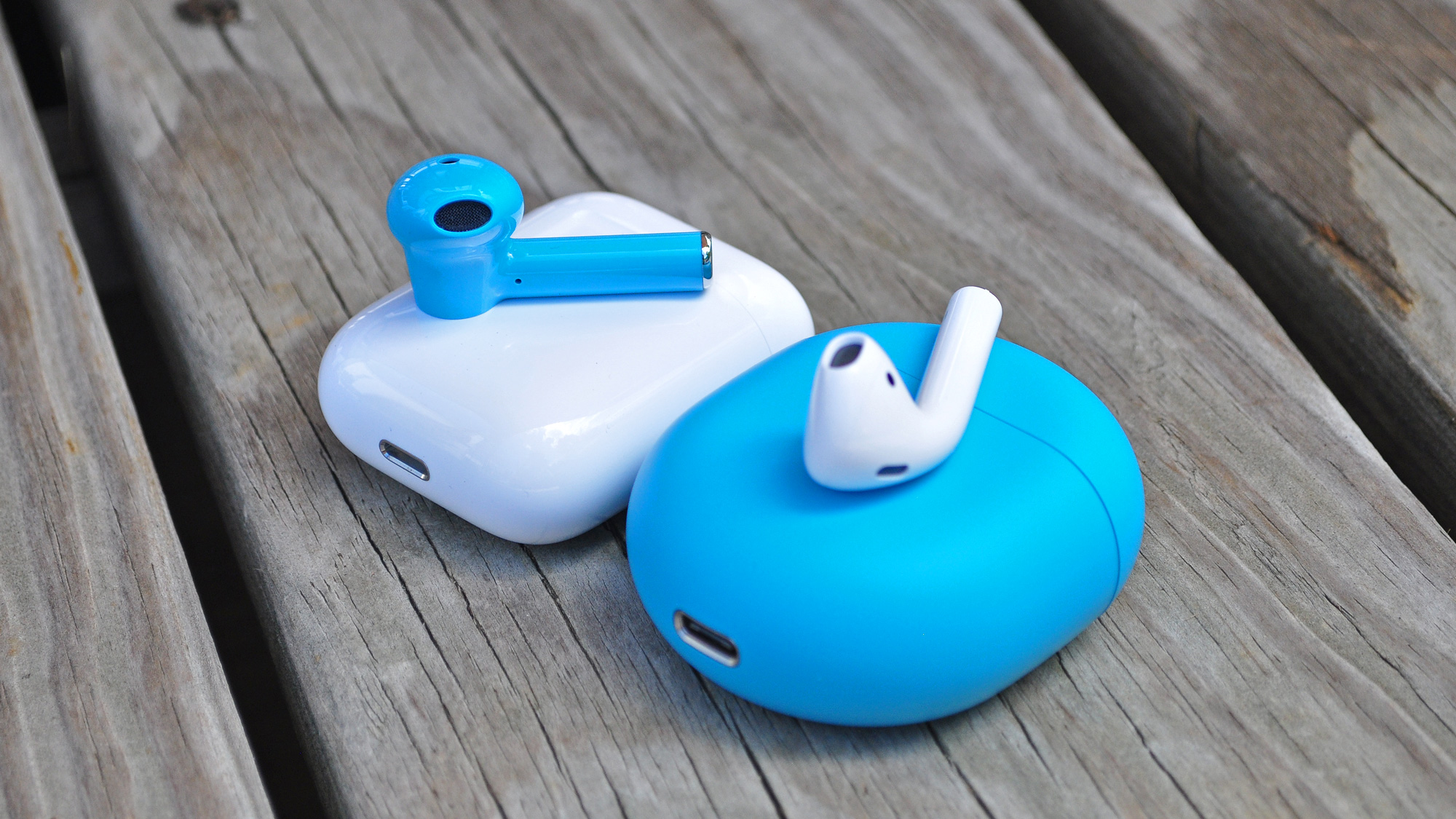
Both of these are ostensibly plastic earbuds with similar designs. While you could argue OnePlus has tried to copy the shape of Apple's buds in a sense, they're just different enough to the point you're not likely to confuse the two.
Sign up to get the BEST of Tom's Guide direct to your inbox.
Get instant access to breaking news, the hottest reviews, great deals and helpful tips.
The standout difference is the back of the buds, which on OnePlus' offering are adorned with a circular touch surface the company likens to a CD. I'm not sure why OnePlus finds it fashionable to reference a physical storage medium that has been obsolete for over a decade on its state-of-the-art truly wireless earbuds, yet here we are. The edges are sharper and the driver housings are larger than the AirPods, though the AirPods are a bit longer. They weigh almost identically: 0.16 ounces for OnePlus' Buds, compared to 0.14 ounces for the AirPods.
Personally, I prefer the design of the AirPods more. I like the sleeker, smoother approach Apple takes, and I prefer the smaller size of the AirPods' charging case. Admittedly, though, there's not much separating the two in terms of design. For what it's worth, OnePlus does at least offer its headphones in several different colors, which is something I wish Apple would try.
Winner: Apple AirPods
OnePlus Buds vs Apple AirPods: Comfort
No two people who wear these earbuds are going to note the same fit and feel, because no two ears are alike. Bearing that in mind, I found the AirPods to be more comfortable for longer periods of time than the OnePlus Buds. While OnePlus' headphones were initially quite light and comfortable, after about an hour of wear my ears started to feel sore, perhaps because of their larger driver housing.
That said, the OnePlus Buds also feel a bit more snug because they take up more of my ear, which perhaps make them a better fit for workouts. (Well, that, as well as the fact that they're IPX4 rated against moisture and dust, which the AirPods are not). I've gone on runs with both sets of buds, and while neither fell out at any point, something about OnePlus' Buds simply felt more secure. The tradeoff for that slight degree of peace of mind, however, is general, long-term discomfort, and so the AirPods take this category.
Winner: Apple AirPods
OnePlus Buds vs Apple AirPods: Controls
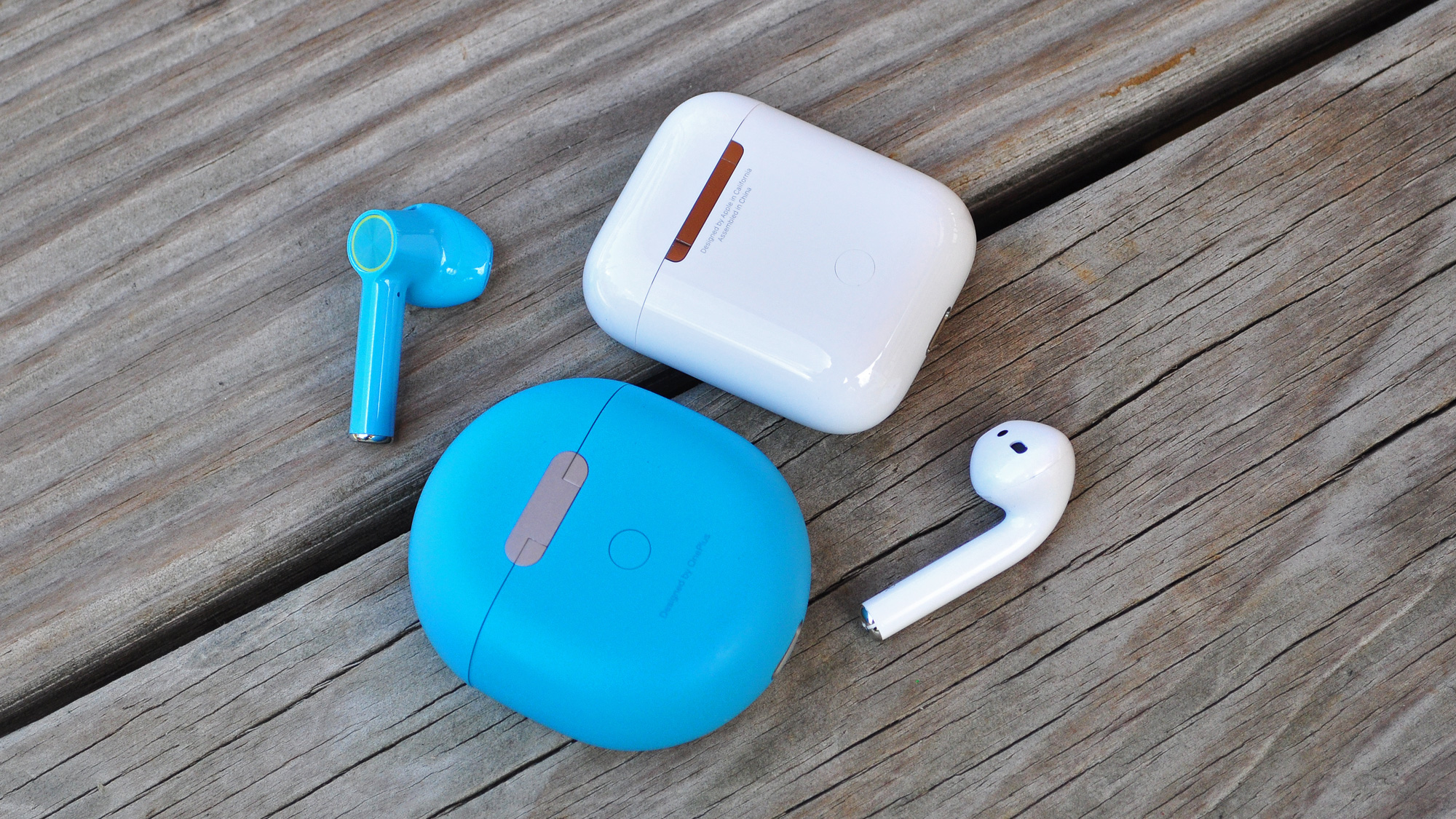
It must be said that both these truly-wireless earbuds disappointed me when it comes to control options. Both the OnePlus Buds and AirPods have customizable controls, so long as you use them in tandem with one of their respective companies' smartphones. However, you can only control double-tap functions per bud, which means you can skip forward or backward, but then you won't have any way to pause audio without removing one bud from your ear.
The AirPods perform slightly better here because they support Hey Siri to summon Apple's digital assistant. OnePlus' Buds don't incorporate OK Google for Google Assistant, though a software update will eventually allow you to summon Google Assistant with a double tap on OnePlus phones.
In the end, both pairs of headphones greatly pale in comparison to Samsung's Galaxy Buds Plus in terms of controls. Those buds both allow for far more customization than simply double taps per ear, and they have a companion app for both iOS and Android so you don't need to use a Galaxy phone to get the best experience. OnePlus and Apple should be as generous.
Winner: Apple AirPods
OnePlus Buds vs Apple AirPods: Noise isolation
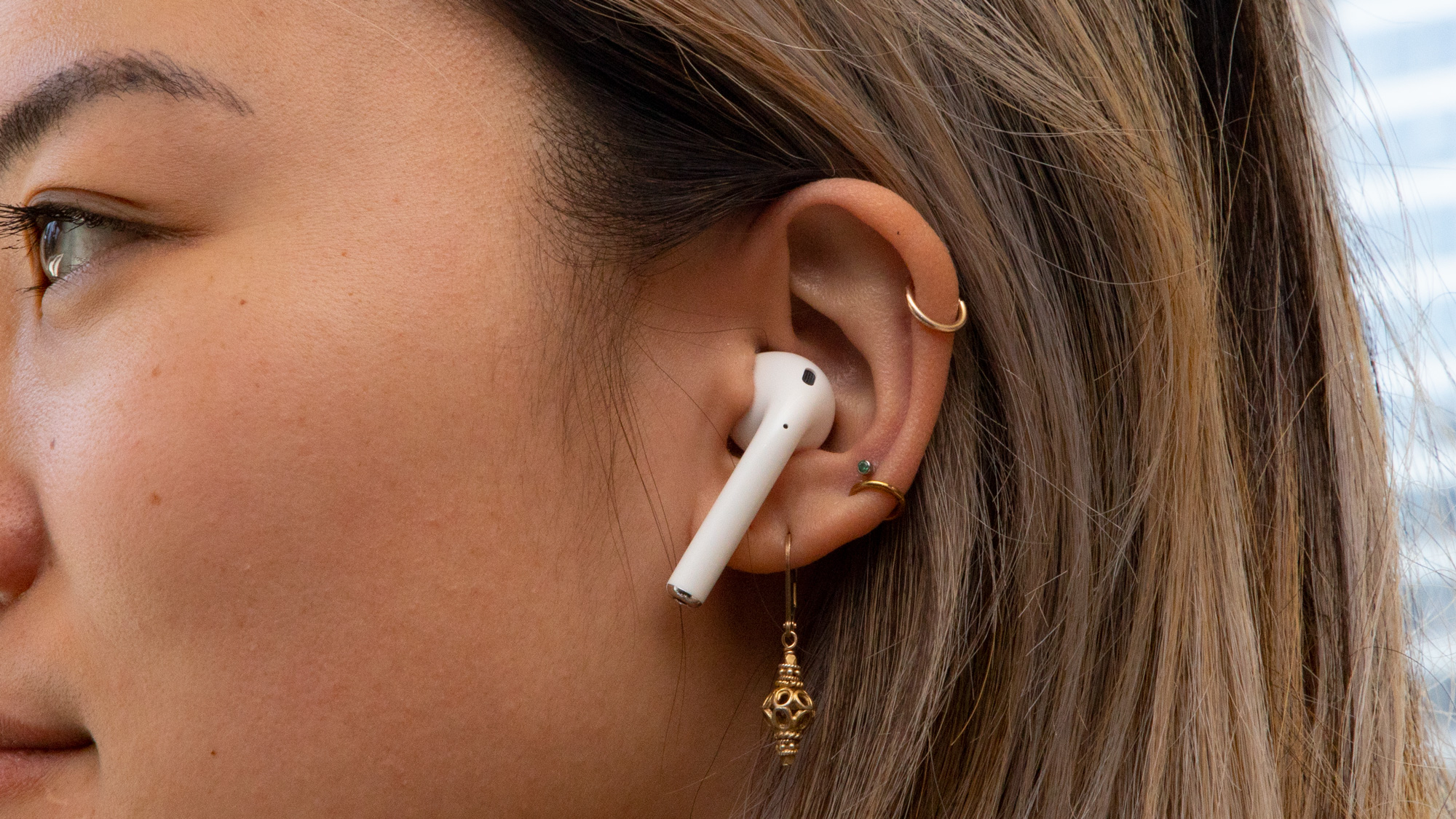
If what you want from your next pair of truly wireless buds is noise isolation from the outside world, neither the OnePlus Buds nor Apple's AirPods are going to do you much good. There's no physical or active noise canceling of any kind, and the fact that both are made entirely of hard plastic essentially means there's no seal keeping your tunes in and your surrounding environment out.
That said, I will give this round to the OnePlus Buds, if only slightly. Because OnePlus' earbuds take up slightly more room in your ear than the AirPods do, they block out a little more sound. However, it has to be said that the difference is extremely slight, and again, these still are far from ideal if noise cancellation is what you're looking for.
Winner: OnePlus Buds
OnePlus Buds vs Apple AirPods: Audio and call quality
To be perfectly frank, neither of these truly wireless buds offer the most immersive sound in the world, though they fall astray in different respects.
For OnePlus, the issue is an overly warm, bass-heavy sound profile that overshadows more intricate aspects of whatever you're listening to. The low end is simply overpowering, leaving a compressed and somewhat muted texture to mids and highs. Apple's AirPods, comparatively speaking, are much more balanced, with highs allowed to shine through, though the mids never seem quite as precise as they could be.
Comparing Juice WRLD's "Conversations" on both pairs of earbuds, OnePlus' Buds obscured the glimmering synth melody that sets the tone at the top of the song, while the AirPods allowed these blips to soar above the bass below. The subtle echo applied to Juice's lyrics were drowned out by OnePlus' predisposition for low-end oomph as well.
Camp Cope's "West Side Story," a track marked by a somber watery guitar lead floating above an equally despondent bassline and vocalist Georgia Maq's mournful lyrics, suffers from excessive muddiness through the OnePlus Buds. This is definitely a case where the AirPods offer the superior listening experience.
Both of these earbuds excel in terms of call quality. Apple's AirPods are particularly strong at preserving the caller's voice even if they're in a windy environment, and OnePlus' Buds are quite good too, thanks to a custom noise reduction algorithm. I've had multiple calls using both pairs, and I heard not one criticism from my correspondents regarding my voice quality through OnePlus' offering.
Winner: Apple AirPods
OnePlus Buds vs Apple AirPods: Special features and apps
Both of these earbuds have a rather limited selection of extra features that you'll need each company's respective phone to access. OnePlus' Buds offer those customizable double-tap controls referenced earlier, as well as Dolby Atmos support on more recent OnePlus handsets. Additionally, on the firm's devices you can access something called Fnatic Mode, which is supposedly optimized for low-latency applications, like gaming.
Apple's AirPods don't have a specialized gaming mode, but they do support "Hey, Siri" for voice commands on iPhone, which is handy. You can turn off automatic ear detection so that music pauses when you remove an AirPod, or select which AirPod's microphone you want to use while chatting — and that's practically all you get.
So, ultimately, neither of these wireless headphones offer luxuries like customizable sound profiles, or the ability to connect to multiple devices at once. And what few they do offer are, again, limited to their smartphones. In the end, neither side wins here.
Winner: Tie
OnePlus Buds vs Apple AirPods: Battery life and charging
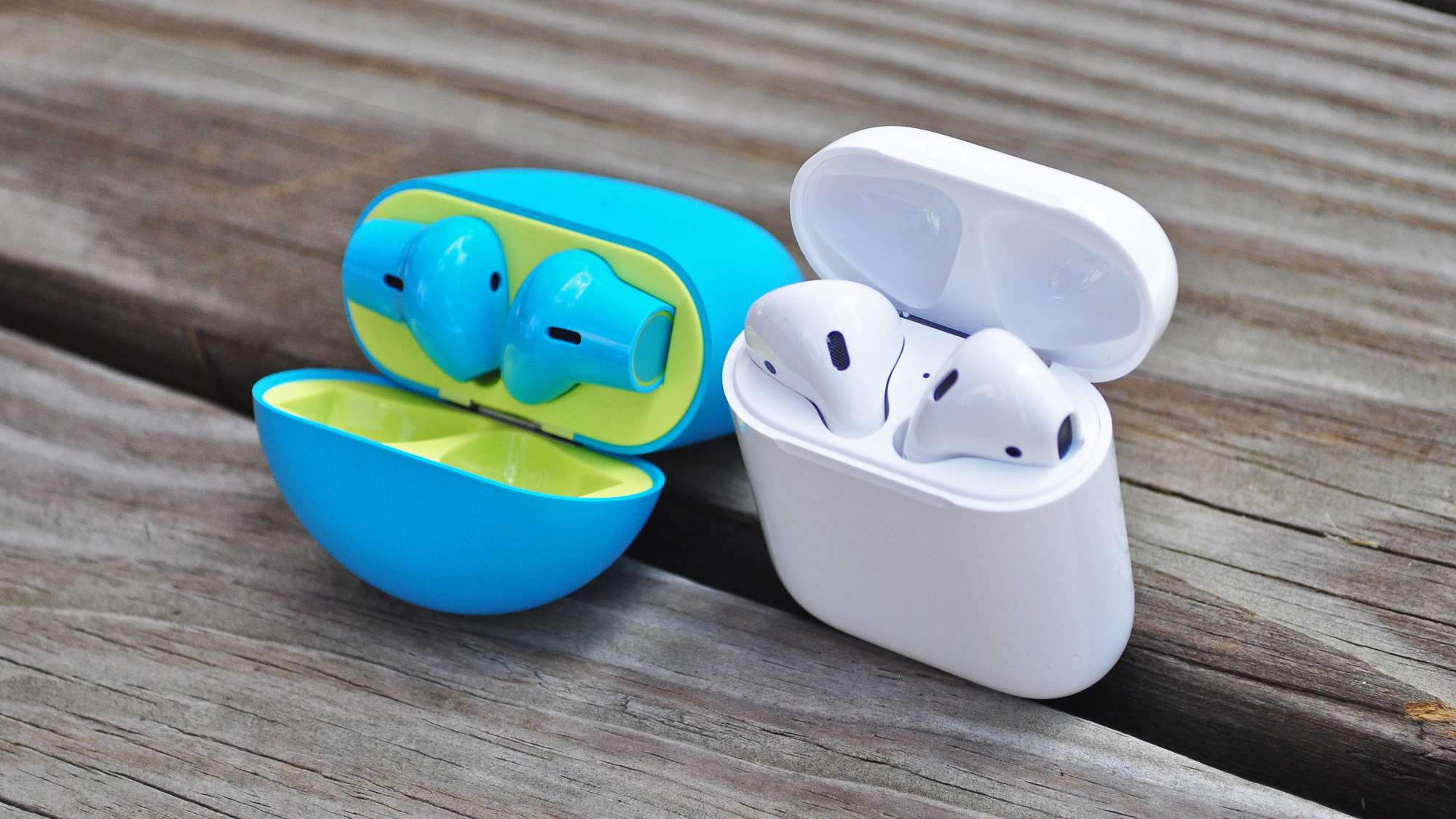
Aside from price, this is the other area where OnePlus' Buds really succeed. Their battery life is unquestionably better than what you can expect from Apple's pair, lasting up to 7 hours, compared to AirPods' peak 5 hours of longevity. What's more, the case keeps OnePlus Buds' charged longer, too, as it allows for 30 hours of total usage, compared to Apple's estimated 24 hours.
And when it comes time to charge, you're going to want OnePlus' Buds as well, because they incorporate the very same Warp Charge technology renowned in the company's handsets. In fact, in just 10 minutes of charging both the case and earbuds with a supported adapter, OnePlus says you can expect 10 hours of listening time, which is indeed fast. However, it's important to note that both pairs charge inside their cases at the same rate: OnePlus says its Buds reach 2 hours of longevity in 10 minutes in the case, while Apple's AirPods reach 3 hours in 15 minutes.
Winner: OnePlus Buds
OnePlus Buds vs Apple AirPods: Verdict
OnePlus' first truly wireless earbuds have a lot going for them: they're cheap, they last a very long time on a charge and they're a great companion for the company's excellent smartphones. However, they lose out to Apple's AirPods primarily for two reasons.
| Header Cell - Column 0 | OnePlus Buds | Apple AirPods |
|---|---|---|
| Price (10) | 9 | 5 |
| Design (15) | 10 | 12 |
| Comfort (15) | 10 | 13 |
| Controls (10) | 3 | 4 |
| Noise isolation (10) | 3 | 2 |
| Audio and call quality (20) | 13 | 16 |
| Special features (5) | 2 | 2 |
| Battery (15) | 14 | 11 |
| Total score (100) | 64 | 65 |
Although AirPods are nearly twice as expensive from most retailers, they sound better and are more comfortable to wear for long periods of time. These are some of the most critical considerations when choosing headphones of any style, and they help the AirPods edge out the OnePlus Buds, though only just.
That's not to say OnePlus' Buds aren't a smart choice, though deciding whether or not they are is largely dependent on your priorities. If you'd ultimately prefer to spend less than triple digits on a pair of wireless earbuds — who wouldn't — and battery life is a main consideration for you, you can't go wrong with OnePlus' offering. Just mitigate your expectations in terms of frills, features and sound quality.
Adam Ismail is a staff writer at Jalopnik and previously worked on Tom's Guide covering smartphones, car tech and gaming. His love for all things mobile began with the original Motorola Droid; since then he’s owned a variety of Android and iOS-powered handsets, refusing to stay loyal to one platform. His work has also appeared on Digital Trends and GTPlanet. When he’s not fiddling with the latest devices, he’s at an indie pop show, recording a podcast or playing Sega Dreamcast.
